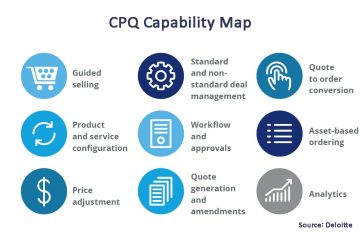Construction projects are complex and require a lot of coordination between teams, which is where project management software like Procore comes into play. However, with its high price tag and sometimes overwhelming features, many construction companies are looking for alternative options in 2023. If you’re one of those companies searching for the perfect replacement, keep reading.
In this blog post, we’ll explore some of the best alternatives to Procore that can help streamline your construction operations while saving you money. Get ready to discover new possibilities.
Table of Contents
What is Procore?
Procore is a cloud-based construction management software designed to help contractors and project managers streamline their workflows. The platform offers a suite of tools that can manage everything from project scheduling to financials, safety, quality control, and more.
One of Procore’s key selling points is its ability to unify all aspects of the construction process into one central location. This includes tracking drawings, documents, RFIs (Requests for Information), submittals (the formal submission of materials or equipment required for the project), change orders (requests made after work has already started), and punch lists (a list of items that need to be completed before final acceptance).
Procore also offers robust reporting capabilities that allow users to track progress over time and identify areas where they can improve efficiency. Additionally, it provides real-time collaboration features like file sharing and messaging which are essential in managing stakeholder communications throughout the life cycle of any construction project.
Procore is an ideal solution for large-scale commercial projects with teams working at different locations since it streamlines communication between stakeholders while keeping everyone on the same page.
How to make the switch from Procore to your new software?
Making the switch from Procore to a new software may seem like a daunting task, but it doesn’t have to be.

- The first step is to identify why you want to make the switch and what features are important for your business needs. Once you have identified these factors, it’s time to start researching alternative options.
- When conducting your research, consider reaching out to other companies who have made similar switches in the past. This can provide valuable insights into their experiences and help inform your decision-making process.
- Next, create a plan for migrating your data from Procore to your new software. It’s important that this process is seamless and does not result in any loss of information or productivity.
- Before officially making the transition, ensure that all team members are trained on how to use the new software effectively. This will reduce confusion and increase adoption rates among employees.
- Give yourself time to adjust after making the switch. There may be some initial hiccups as everyone gets used to using a different system but with patience and perseverance, you’ll soon settle into your new routine.
Alternatives to Procore
Procore is a well-known construction project management software, but it may not be the perfect fit for every company. Fortunately, there are several alternatives to Procore that offer similar features and capabilities.
One popular alternative is PlanGrid, which offers real-time collaboration and document management features. It also has an easy-to-use interface that makes it simple for teams to communicate and manage tasks.
Another option is Autodesk BIM 360, which specializes in building information modeling (BIM) workflows. This platform allows users to access project data from anywhere using cloud-based technology.
For those looking for a more comprehensive solution, CoConstruct provides tools for estimating, scheduling, budgeting, and project management all in one place. It even includes a client portal where clients can approve change orders and make payments online.
Ultimately, the best alternative to Procore will depend on your specific needs as a company. Consider factors such as pricing, ease of use, integrations with other software systems you already have in place before making a decision.
Which alternative is best for you?
When it comes to finding the best alternative to Procore, there are several options available in the market. However, choosing the right one for your business can be a daunting task. To begin with, you need to assess your requirements and identify which features of Procore you use frequently.
One important aspect to consider is the size and complexity of your projects. If you handle large-scale construction projects that require intricate project management tools, then software like PlanGrid or Buildertrend might be suitable for your needs. These platforms offer advanced scheduling capabilities and detailed reporting functionalities that can streamline complex workflows.
On the other hand, if budget is a concern for you, then an affordable option like CoConstruct might be worth considering. This software offers basic project management features such as scheduling tools, file sharing capabilities and client communication channels at an affordable price point.
Another important factor is ease of use. Certain alternatives like Fieldwire or RedTeam prioritize easy-to-use interfaces that reduce training time and help users get up-to-speed quickly on their platforms.
Ultimately, deciding on which alternative is best for you requires careful evaluation of various aspects including pricing models, scalability potential and integration options with existing systems before making a final decision.
Pros and Cons of each alternative
When considering alternatives to Procore, it’s important to weigh the pros and cons of each option. Here are some factors to consider:
First up is PlanGrid. One major advantage of PlanGrid is its ease of use – even those without much construction experience can quickly learn how to navigate the interface. However, some users have found that it lacks certain features they need for their particular projects.
Next on the list is BuilderTREND. One benefit of this software is its extensive range of tools and integrations with other programs like QuickBooks and Xero. But for some users, the sheer number of options can be overwhelming.

Another option worth considering is CoConstruct. This platform offers excellent communication tools that make collaboration between team members a breeze. However, it may not be ideal for larger-scale projects due to limitations in project tracking capabilities.
There’s STACK Estimating & Takeoff Software, which boasts powerful estimating features that can save time and increase accuracy. Nonetheless, some users have reported issues with customer support and occasional bugs within the software itself.
Each alternative has its own strengths and weaknesses depending on your specific needs as a construction professional or business owner.
Conclusion
After reviewing the alternatives to Procore, it’s clear that there are several quality options available in 2023. Each alternative has its own unique set of features and benefits, so choosing the best option for your business will depend on your specific needs.
If you’re looking for a software solution with robust project management capabilities, then PlanGrid may be the way to go. If budgeting is a priority, then CoConstruct may be more suitable. For those who want an all-in-one platform with comprehensive functionality across all aspects of construction management, Buildertrend could be the perfect fit.



